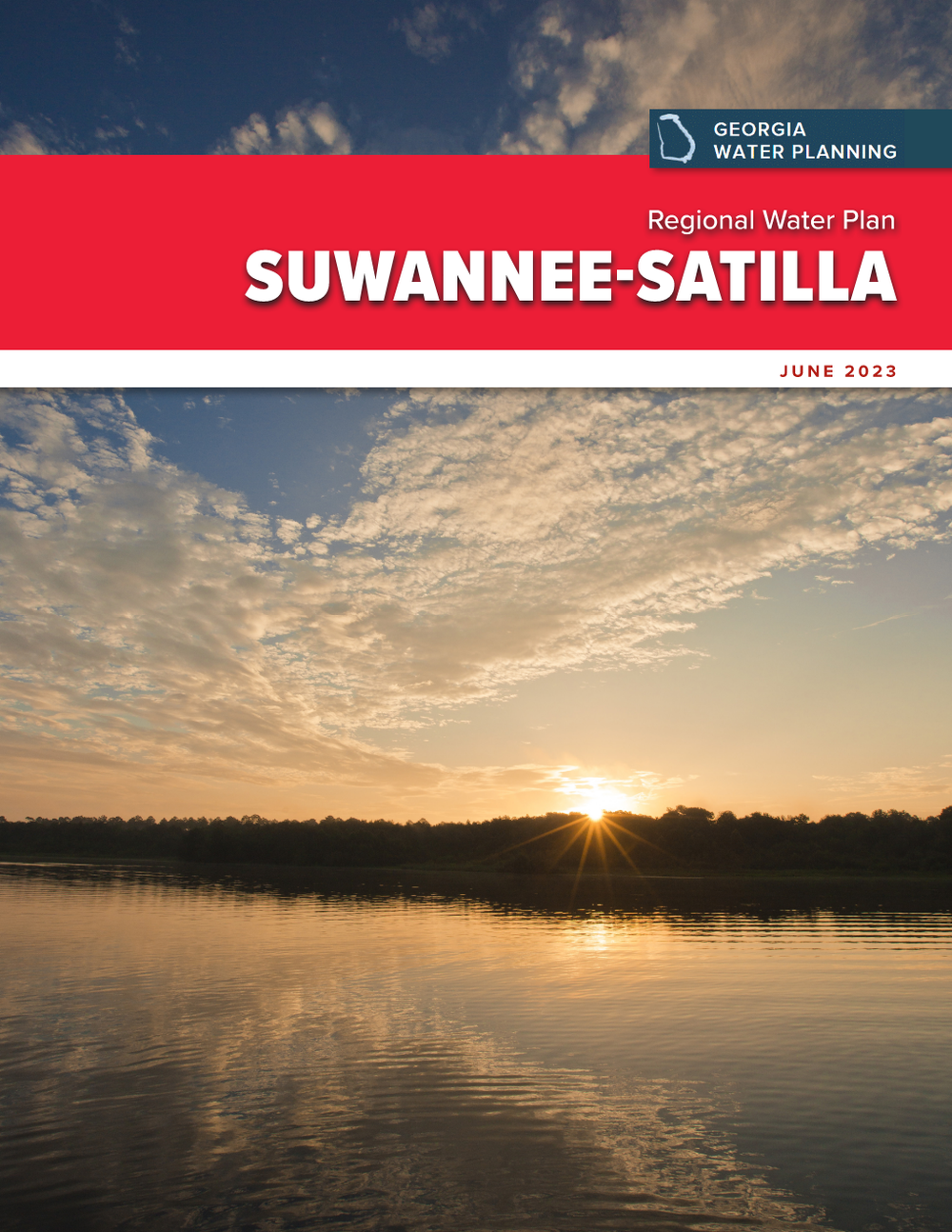
Suwannee-Satilla Regional Water Plan
The Suwannee-Satilla Regional Water Plan was initially completed in 2011 and subsequently updated in 2017 and 2023. The plan outlines near-term and long-term strategies to meet water needs through 2060.
Suwannee-Satilla
Regional Water Plan
Background
The Suwannee-Satilla Region includes 18 counties in the south central portion of Georgia. Over the next 40 years, the population of the region is projected to increase by 4% growing from approximately 416,000 to 435,000 residents. Key economic drivers in the region include agriculture, forestry, professional and business services, education, healthcare, manufacturing, public administration, and construction. Recreation and fishing are also important to the area. Water supplies, wastewater treatment, and related infrastructure will need to be developed and maintained to support these economic drivers and maintain a high quality of life.

The rivers in the region are unique in comparison to most of Georgia Rivers in that the watersheds are much smaller in size. This results in more frequent surface water lower flow conditions and increases the importance of groundwater to the region. Surface water is forecasted to meet about 21% of the region’s water use and agriculture accounts for 99% of this use. Surface water use in the region is highest in the Suwannee River basin, followed by the Satilla River basin. Groundwater is predominately used from the Floridan aquifer and is needed to meet about 79% of the region’s water needs. Agriculture, municipal, domestic, and industry are the major demand sectors for groundwater
Water resource challenges in the region include projected surface water shortfalls during some periods of time throughout the region, associated with flows that would likely be unable to satisfy withdrawal needs or adequately assimilate wastewater discharges; and water quality challenges associated with trophic-weighted residual mercury in fish tissue, fecal coliform, and low dissolved oxygen in some portions of the region.
Management practices are needed to address these challenges including: water conservation; refining planning information; use of existing or new storage to help reduce the frequency/severity of critical low flow conditions; sustainable use of groundwater during times of limited surface water flows; improving/upgrading wastewater treatment; and addressing non-point sources of pollution.
Related Files: